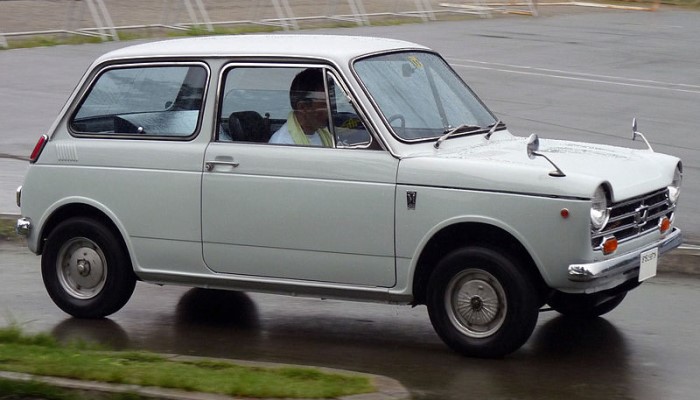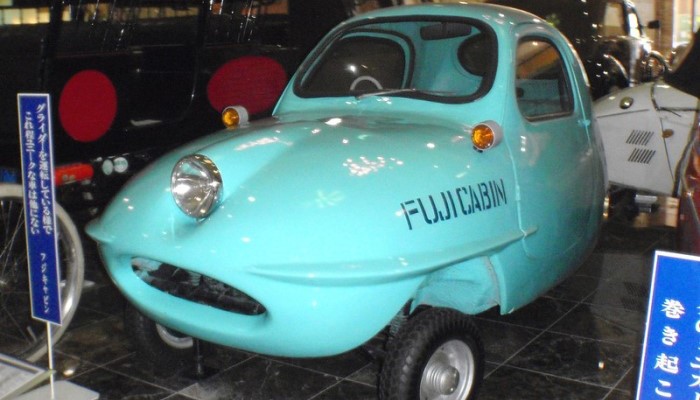Honda S360
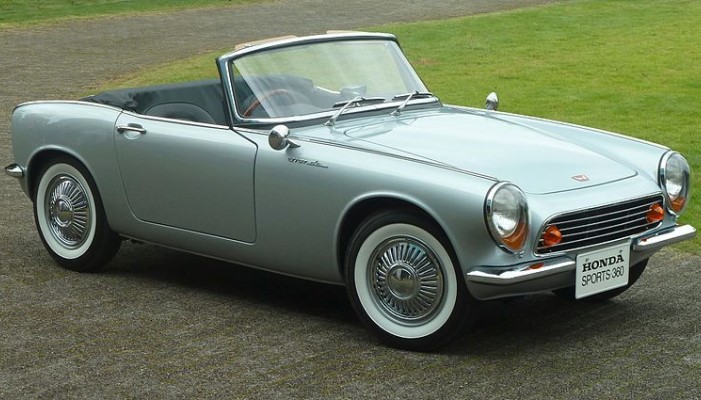
Photo: "File:Honda Sports360 prototype 01.jpg" by Maysy
Honda's First Baby
Two models are considered the first Honda cars: the S500 roadster and the mini-truck, also known as the T360 minivan. This company is missing one more car that has not reached mass production. It was another Honda S360 roadster. It was to become Honda's first car.
In May 1955, the all-powerful Ministry of Trade and Industry sent out an invitation to all vehicle manufacturers in Japan to participate in the People's Car project. It was proposed to create a small, four-seater car with a price of 150,000 yen.
A refusal by the Ministry would certainly have very unpleasant consequences, and many Japanese firms took the stand. Honda was no exception. However, Soichiro Honda himself believed that there was no need to rush into car production; it was necessary to soberly weigh your capabilities and prepare well.
While those at the top were assessing the possibilities, in September 1958, the Third Section was opened at the Honda Research Center, responsible for work on automotive issues. This group hired the first seven, then 15 more engineers, most of whom came from the aviation industry.
After the war, the Japanese aviation industry had its wings severely cut off, and many specialists were left without work, but they were not allowed to fall into ruin and were employed by automobile and motorcycle companies.
Development and Honda's Change of Strategy
In October 1958, the Third Section prepared the design and drawings of the future car. By January 1959, a model was built under the code designation XA170, on which the steering system, suspension, body, and engine were to be tested. The power unit was supposed to be four-cylinder, with a displacement of 22 ci (362 cc). The future car was envisioned as a four-door sedan.
The next turn in this story happened in the fall of 1959. Honda, having assessed the situation on the market, decided to reorient the development of the future car from a sedan to a sports car. By the end of 1959, many competitors had already launched their people's cars, and there were several more such models on the way.
Honda reasonably decided not to rush along with the crowd but to produce something that no one had yet. There were no sports cars on the Japanese market. And a car of this type was more consistent with the company’s image.
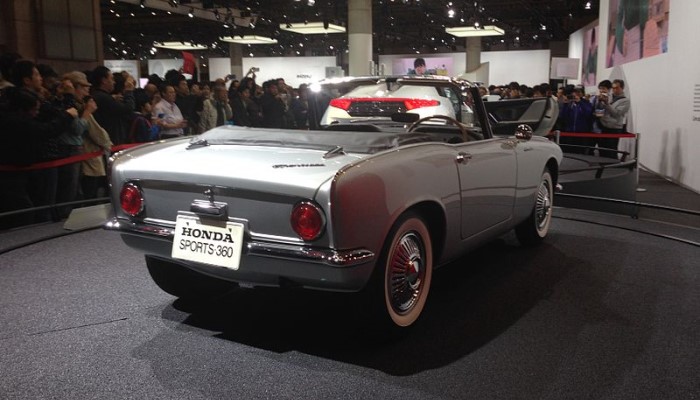
Of course, the sports car turned out to be small and subcompact, powered by the same 22 ci (362 cc) engine, but such small sports cars were produced by many companies in the world in the fifties. Soon a second prototype was created under the symbol XA190, on which the components and assemblies of the future roadster began to be tested.
Soon, more work was added to the third section. Honda's senior managing director, Takeo Fujisawa, insisted on developing a more utilitarian vehicle in tandem with the roadster, which should be a mini-truck. Still, it was necessary to issue something that roughly met the requirements of the Ministry of Trade and Industry.
And commercial transport has always provided reliable income. In terms of engine and partial suspension, the mini-truck was going to be unified with the roadster. The minitruck prototype was designated XA120.
Liberalization of the Auto Market
While work was in full swing at Honda to create new equipment, the Japanese authorities decided to liberalize the automobile market and abolish import duties on imported cars. It became clear to everyone that, in this case, the Japanese auto industry would die very quickly.
To prevent this from happening, Japanese officials conceived a structural reform of the industry, the essence of which was the merger of many small companies into several large ones, more capable of competing with foreign manufacturers. It was planned to split the remaining companies into three divisions.
The first division, two companies, was responsible for the production of middle-class and higher-class cars. The second division, also two companies, was responsible for the production of a niche product—sports cars, SUVs, etc. The third division, three companies, produces minicars.
Problems for the Company
Honda, which was preparing to start producing cars, had no place in this design; the company simply would not have been given permission to produce cars. Mr. Honda began a harsh debate with officials.
And in order to somehow fit into the new conditions, they decided to expand the model range to four cars. Another roadster and a mini-truck were added. Now with a 30,5 ci (500 cc) engine and liquid cooling. The work of the Third Section increased even more.
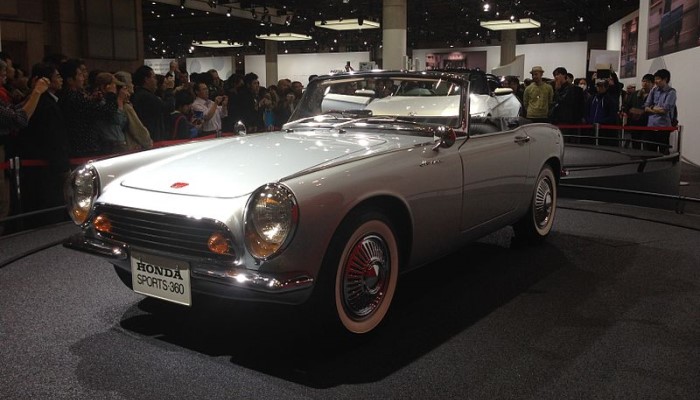
The decision to expand the model range will have a detrimental effect on the fate of the Honda S360, but for now, the project has entered its final stage. Two pre-production prototypes were already under construction. The new roadster had a quite nice design. Engine: Honda S360 inline four, displacement: 22 ci (360 cc), power: 30 hp, four-speed gearbox. Rear-wheel drive.
The presentation to new car dealers was scheduled for April 15, 1962, but was then postponed to June 5. They didn't have time to complete the S500 roadster. At the same time, they had to deal with another problem.
In Japan, only cars from the corresponding services were painted red and white. Honda wanted to paint their roadsters red. A scandal with the authorities arose again. Honda scolded this ban in many media outlets, claiming that such nonsense does not exist in any industrialized country. As a result, the ban was overcome.
Demonstration
On June 5, 1962, a demonstration of new Honda products to the company's dealers took place. The presentation took place on the race track. Mr. Honda himself opened it while driving a roadster. Dealers were absolutely delighted with the new products.
Thus, goods appeared that could be traded all year round; the demand for motorcycles fell in winter. On January 25 of the same year, at the Tokyo Motor Show, the trio from Honda was presented to the general public and foreign dealers of the company.
This is where clouds gathered over the Honda S360. The S500 was more suitable for foreign markets. It had obvious advantages: a more powerful engine and liquid cooling.
The Ending for the S360
Finally, problems of a different kind put an end to the Honda S360. The company did not have enough capacity to simultaneously launch four new machines into series. Yes, new workshops were being built, but they were not ready yet, and it was necessary to launch production now.
The reform of the Ministry of Trade and Industry hung over Honda like a sword of Damocles. By the time this reform begins, Honda needs to become a major car manufacturer. Another thing is that over time, the reform ardor of officials faded, but then no one knew this.
Therefore, they sacrificed the least popular product, the S360. Although it was with this roadster, due to its maximum readiness for mass production, that car production at Honda was supposed to begin.

Unique Car Zone Team
A group of several fans of everything that moves on four wheels, a few article creators, a couple of marketing strategists, designers, web developers, and lots of coffee.




